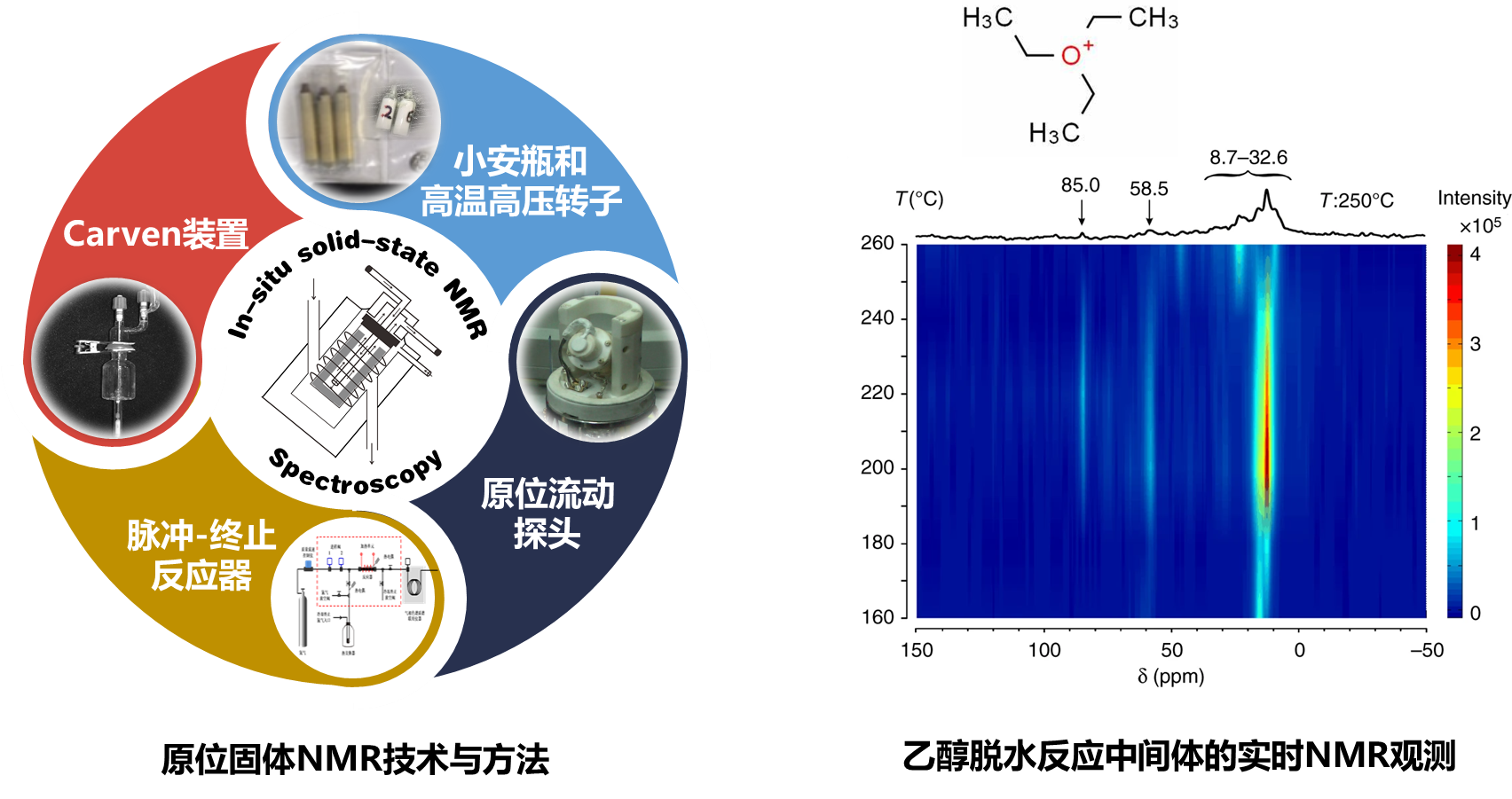In Situ and Operando NMR Technique and Catalytic Reaction Mechanism
The focus is on the development of in situ and operando ssNMR technique enables NMR characterization of gas-solid and liquid-solid catalytic reaction processes within a wide range of temperatures (up to 400°C) and pressures (up to 50 bar). This technique allows for the direct observation and analysis of the dynamic changes in the structure and molecular dynamics of catalysts during the reaction process. Integrating rapid sampling methods further enhances the ability to quickly track and analyze these changes, providing a deeper understanding of the catalytic reaction mechanism.

1. Wang, X. M.; Qi, G. D.; Xu, J.; Li, B. J.; Wang, C.; Deng, F. NMR-Spectroscopic Evidence of Intermediate-Dependent Pathways for Acetic Acid Formation from Methane and Carbon Monoxide over a ZnZSM-5 Zeolite Catalyst. Angew. Chem. Int. Edit. 2012, 51, 3850-3853.
2. Zhou, X.; Wang, C.; Chu, Y.; Xu, J.; Wang, Q.; Qi, G.; Zhao, X.; Feng, N.; Deng, F. Observation of an oxonium ion intermediate in ethanol dehydration to ethene on zeolite. Nat. Commun. 2019, 10, 1961.
3. Wang, C.; Zhao, X.; Hu, M.; Qi, G.; Wang, Q.; Li, S.; Xu, J.; Deng, F. Unraveling Hydrocarbon Pool Boosted Propane Aromatization on Gallium/ZSM-5 Zeolite by Solid-State Nuclear Magnetic Resonance Spectroscopy. Angew. Chem. Int. Edit. 2021, 60, 23630-23634



